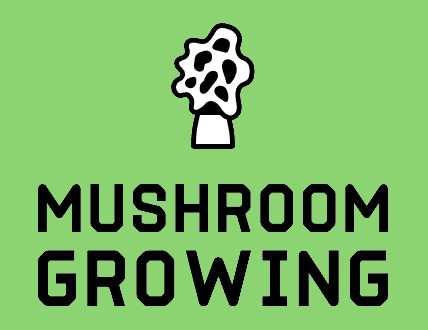What is a Portobello Mushroom?
A Portobello Mushroom(sometimes pronounced as Portabello or Portabella) is a giant version of an everyday mushroom. They are basically the fully grown versions of cremini or button mushrooms, apart from them being much larger than their younger versions and are said to have originated in the US sometime during the mid-to-late '70s.
Why Grow Portobello mushrooms at home?
- They require minimum effort and time
Growing your own portobello mushroom farm at home is a great way for individuals who want to try new things, save money, and have fresh mushrooms whenever they desire them. Because portobellos require little attention and develop fast, it's a simple procedure that only requires minimal effort and is great for small-time farmers who want to have something back from the time and effort they put in.
- Nutritional Value of Portobellos
Portobello mushrooms are low-calorie foods with only 16Kcals per 100 grams. They are also rich in many nutrients that the body needs, including niacin (vitamin B3) riboflavin (vitamin B2), pantothenic acid (B5), copper, potassium, phosphorus, selenium, and iron. Eating portobello mushrooms regularly can provide your body with the nutrients it needs to stay healthy and strong
- A great substitute for meat
Portobello mushrooms are meaty in flavour and can be used to replace vegetarians in many dishes, making them attractive alternatives for meat-eaters. They may be grilled or cooked over an open flame without drying out or burning because of their huge size, which makes them ideal for grilling since they won't go dried up or burned quickly.
They can also be used in salads, sandwiches, soups and other recipes
Conditions for growing Portobello mushrooms at home
- Temperature: 18-25 degrees Celsius/64-77 degrees Fahrenheit is ideal
- Humidity: 70 to 80 per cent relative humidity is best for growing portobello mushrooms at home
- Light: Portobello mushrooms require a lot of light to grow, so make sure you place them in a spot where they will get enough sunlight every day. In the absence of natural light, you can supplement with fluorescent lights that have a colour temperature of 6500K to promote growth.
- Fresh Air: Portobello mushrooms grow best in the fresh air and even oxygenated water, so be sure that your mushroom growing site has good ventilation.
- Proper Drainage: Since portobello mushrooms are grown in the ground, make sure you put some gravel or drainage holes at the bottom of your container to prevent water retention and anaerobic conditions that could lead to bacterial growth.
How to Grow Portobello Mushrooms at Home
Step One: Get your materials
You must have all the necessary materials ready at hand before you begin.
- Plastic containers or wood boxes
- Mushroom spawn (sawdust or dowels)
- Potting soil
- Gravel/perlite that will help with drainage. Note that mushroom spawn is usually in the form of sawdust or dowels.
- Water
Step Two: Prepare your containers
Start by drilling or punching holes into your container. The size and number of holes depend on how many portobello mushrooms you want to grow, but they should be evenly spaced across the surface of the container. Drill about4 to 5 holes for each mushroom that you want to grow
After punching or drilling holes into your containers, place perlite or gravel at the bottom of the container before adding potting soil. This will help with drainage and aeration so your mushrooms can breathe well enough to give off a good yield
Lastly, pour water into your container until the water level reaches about one inch below the top of your container. This is to make sure that there will be enough moisture in the environment for proper mushroom growth.
Step Three: Inoculate your containers with mushroom spawn
In order for mushrooms to grow, you need to inoculate your containers with mushroom spawn prior to adding soil and perlite. You can get the spawn from dowels or sawdust and sterilize them in a mixture of water and bleach. This process involves dipping several mushroom spawn pieces into your bleach-water solution until they are completely submerged, leaving them there for about 10 minutes before rinsing with clean water. After doing this several times, let your pieces of spawn dry completely
There are two ways you can inoculate your containers with mushroom spawn: using dowels or using sawdust. If using dowels, place them upright in the container and cover them with some soil before adding perlite on top of it to act as a buffer. If using sawdust, simply sprinkle pieces of sawdust onto your container before adding perlite.
Step Four: Water the soil
After you've added water to your containers, place them outdoors where they can receive sunlight for at least six to eight hours a day. Then wait for an inch of rainwater to accumulate at the bottom of your containers before watering them again. Do not let the soil dry out while your mushrooms are growing. Keep watering them until they're ready to be harvested.
Step Five: Harvest your mushrooms
After two to three weeks, your portobello mushrooms should be ready for harvest. Simply pick them carefully using a pair of tongs or gloves and store them in the fridge if you can't eat them immediately. Washing your harvested mushrooms is not necessary because they don't have any dirt on them. Just brush away any stray bits of matter and you're good to go.
Step Six: Storing
Depends on how long you intend to store them. If you want to keep them fresh for up to four weeks, place them in the fridge. For longer storage, freeze your mushrooms instead as it allows you to enjoy their meaty texture and rich flavour months after harvesting them.
If you plan on saving some of the mushrooms, make sure they are completely dried out before storing them in a paper bag. Don't use plastic bags to store them because moisture builds up inside them which could lead to bacterial growth that affects your mushrooms. After drying your mushrooms, place them in a brown paper bag and keep them in a cool, dry place to prevent damage.
Conclusion
After following these steps, you should have a healthy batch of mushrooms to enjoy. Just remember to monitor the moisture level in your soil because this is integral to the success of your mushroom growing project. For beginners, it's best to start with a simple design and scale up as you become more experienced at raising portobello mushrooms on your own.
Have you given this a try? If so, please let me know how it went in the comments!

